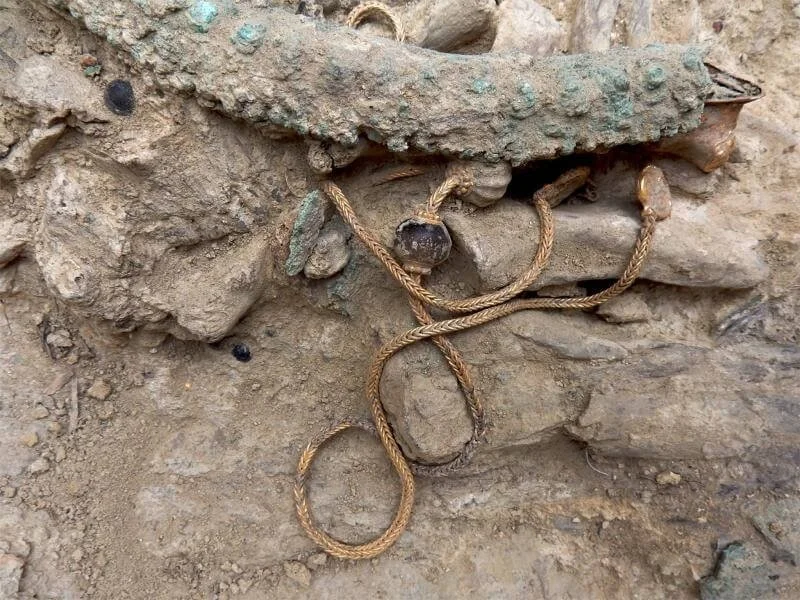The results of a new analysis of a bone that was discovered in a French cave decades ago are remarkable.
The bone in question, a hip bone known as the ilium, was found in the massive Paleolithic Grotte du Renne cave complex, one of the greatest sites in Europe.
The upper levels of the caves show a period when anatomically modern humans lived there, together with the bones of Neanderthals, a subspecies of archaic humans that thrived in Eurasia until about 40,000 years ago.
But perhaps most intriguingly, a layer has been found that points to a time when both hominids coexisted.
The ilium found (a) is compared to a Neanderthal bone (b) and a recent perinatal bone (c). Credit: Scientific Reports
One of the three bones that make up the human pelvis, the ilium bone was discovered and is thought to have belonged to a baby. After careful examination, the bone was compared to the remains of two Neanderthals and 31 modern people, but it didn't quite match either, suggesting that it might be a hybrid.
Although significantly different from anatomically modern people and the bones we commonly see on skeletons today, the archeologists' team believes that the bone has a definite ancestry of Homo Sapiens, revealing a possibly undiscovered human species.
In their report, the research team described their findings in detail, stating that "our results reveal a morphological differential between the ilia of Neanderthals and anatomically modern neonates.
"Although AR-63 marginally falls outside of recent variability, it varies from Neanderthals in a noticeable way. We suggest that this is because it comes from a lineage of early modern humans, whose morphology is slightly different from that of modern humans.
The "techno-cultural complex" stratum of the cave also included a number of stone implements.
The Grotte du Renne where the bone was found. Credit: Pueblopassingby/Wikimedia Commons
The implements simulated flints and other such things that would have required knowledge of skills and methods transferred from one civilization to another.
This interbreeding could point to a period in which anatomically modern humans and Neanderthals lived side by side for a very long time.
It's not the first time that newly found human remains have changed how we view the past.
At the Sierra de Atapuerca excavation site near Burgos, Spain, several facial bones dating back 1.4 million years were found.
The general supervisor of the Museum of Human Evolution in Burgos, archaeologist Aurora Martin, stated: "Until 1994, it was thought that there had not been any early human species in Europe before 500,000 years ago.
"Right now, we're discussing 1.4 million years ago. To put it another way, we added a million years to the evolution of humanity in Europe.









